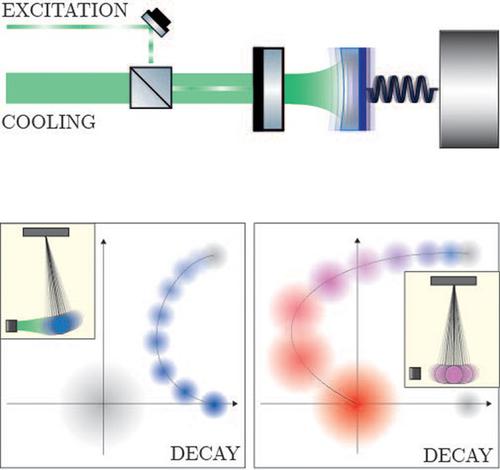当前位置:
X-MOL 学术
›
Eur. Phys. J. D
›
论文详情
Our official English website, www.x-mol.net, welcomes your
feedback! (Note: you will need to create a separate account there.)
Probing quantum gravity effects with quantum mechanical oscillators
The European Physical Journal D ( IF 1.5 ) Pub Date : 2020-09-01 , DOI: 10.1140/epjd/e2020-10184-6 Michele Bonaldi , Antonio Borrielli , Avishek Chowdhury , Gianni Di Giuseppe , Wenlin Li , Nicola Malossi , Francesco Marino , Bruno Morana , Riccardo Natali , Paolo Piergentili , Giovanni A. Prodi , Pasqualina M. Sarro , Enrico Serra , Paolo Vezio , David Vitali , Francesco Marin

中文翻译:

用量子机械振荡器探测量子引力效应

The European Physical Journal D ( IF 1.5 ) Pub Date : 2020-09-01 , DOI: 10.1140/epjd/e2020-10184-6 Michele Bonaldi , Antonio Borrielli , Avishek Chowdhury , Gianni Di Giuseppe , Wenlin Li , Nicola Malossi , Francesco Marino , Bruno Morana , Riccardo Natali , Paolo Piergentili , Giovanni A. Prodi , Pasqualina M. Sarro , Enrico Serra , Paolo Vezio , David Vitali , Francesco Marin

|
Abstract
Phenomenological models aiming to join gravity and quantum mechanics often predict effects that are potentially measurable in refined low-energy experiments. For instance, modified commutation relations between position and momentum, that account for a minimal scale length, yield a dynamics that can be codified in additional Hamiltonian terms. When applied to the paradigmatic case of a mechanical oscillator, such terms, at the lowest order in the deformation parameter, introduce a weak intrinsic nonlinearity and, consequently, deviations from the classical trajectory. This point of view has stimulated several experimental proposals and realizations, leading to meaningful upper limits to the deformation parameter. All such experiments are based on classical mechanical oscillators, i.e., excited from a thermal state. We remark indeed that decoherence, that plays a major role in distinguishing the classical from the quantum behavior of (macroscopic) systems, is not usually included in phenomenological quantum gravity models. However, it would not be surprising if peculiar features that are predicted by considering the joined roles of gravity and quantum physics should manifest themselves just on purely quantum objects. On the basis of this consideration, we propose experiments aiming to observe possible quantum gravity effects on macroscopic mechanical oscillators that are preliminary prepared in a high purity state, and we report on the status of their realization.Graphical abstract

中文翻译:

用量子机械振荡器探测量子引力效应
摘要
旨在结合引力和量子力学的现象学模型通常预测在精细的低能实验中可能可测量的影响。例如,位置和动量之间的修正换向关系(即最小的标尺长度)产生了可以用其他哈密顿量来编码的动力学。当将其应用于机械振荡器的典型情况时,此类参数在变形参数中处于最低顺序,会引入较弱的固有非线性,因此会偏离经典轨迹。这种观点激发了一些实验建议和实现,导致有意义的变形参数上限。所有这些实验均基于经典的机械振荡器,即由热态激发。我们确实确实指出,退相干在现象学的量子引力模型中通常不包括在从(宏观)系统的量子行为中区分经典行为的过程中起主要作用。但是,如果通过考虑引力和量子物理学的共同作用而预测的特殊特征仅在纯量子物体上表现出来,这也就不足为奇了。基于此考虑,我们提出了旨在观察可能对高纯度状态下初步制备的宏观机械振荡器产生量子引力效应的实验,并报告了其实现状况。通过考虑引力和量子物理学的共同作用而预测的特殊特征应该仅在纯量子物体上表现出来就不足为奇了。基于此考虑,我们提出了旨在观察可能对高纯度状态下初步制备的宏观机械振荡器产生量子引力效应的实验,并报告了其实现状况。通过考虑引力和量子物理学的共同作用而预测的特殊特征应该仅在纯量子物体上表现出来就不足为奇了。基于此考虑,我们提出了旨在观察可能对高纯度状态下初步制备的宏观机械振荡器产生量子引力效应的实验,并报告了其实现状况。图形概要












































 京公网安备 11010802027423号
京公网安备 11010802027423号